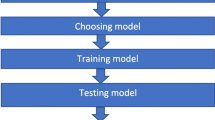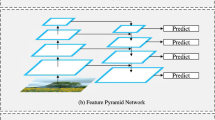Abstract
Over the years, the world has witnessed many natural or man-made disasters, whether they are accidents, military operations, or terrorism. Researchers and activists in various civil, medical, engineering, and other fields have worked to reduce the occurrence of these disasters or manage them effectively to ensure the least damage and fewer injuries. In this study, a system was proposed that is capable of detecting the presence of fires that may accompany various types of disasters in a way that ensures the safety of the disaster management team, as well as detecting injured or bleeding people by detecting the presence of blood to speed up their rescue. The system relies on processing images taken from unmanned aerial vehicles (UAVs) over the disaster site. The processing reveals the color gradients of fire and blood using color detection and convolution with an edge detection filter in MATLAB, and then synthesis of the architecture using Excel DSP. The system is then built using System Generator to be implemented on the Field Programmable Gate Array (FPGA). The proposed algorithm was implemented under multiple conditions for both fire and blood, and its implementation was in real-time with a low device utilization of 64.381 MHz and 69.86 frames per second. The results showed the ability of the system to detect fires and the blood of the injured at a high speed and under certain conditions, and it could be developed to become a system approved for most conditions and to be a more comprehensive system in terms of transmitting information wirelessly.






















Similar content being viewed by others
Data availability
Not applicable.
Code availability
Not applicable.
References
AlAli ZT, Alabady SA (2022) A survey of disaster management and SAR operations using sensors and supporting techniques. Int J Disaster Risk Reduct 82:103295. https://doi.org/10.1016/j.ijdrr.2022.103295
AlAli ZT, Alabady SA (2022) The role of unmanned aerial vehicle and related technologies in disasters. Remote Sens Appl: Soc Environ 28:100873. https://doi.org/10.1016/j.rsase.2022.100873
Al-Naji A, Perera AG, Mohammed SL, Chahl J (2019) Life signs detector using a drone in disaster zones. Remote Sens 11(20):2441. https://doi.org/10.3390/rs11202441
Ali ZTA, Alabady SA (2022) Unmanned aerial vehicle benefits, and drawbacks in critical situations. Quantum J Eng Sci Technol 3(4):Art. no. 4
Arnold RD, Yamaguchi H, Tanaka T (2018) Search and rescue with autonomous flying robots through behavior-based cooperative intelligence. Int J Humanitarian Action 3(1):18. https://doi.org/10.1186/s41018-018-0045-4
Burger W, Burge MJ (2016) Digital image processing: an algorithmic introduction using Java. Springer, Berlin
Chen X, Chen H (2010) A novel color edge detection algorithm in RGB color space. In: IEEE 10th International Conference on Signal Processing Proceedings, pp 793–796
Chowdhury S, Rafiq M (2012) A proposal of user friendly alive human detection robot to tackle crisis situation. In: 12th International Conference on Control, Automation and Systems, 2012, pp 2218–2221
Doulamis N, Agrafiotis P, Athanasiou G, Amditis A (2017) Human object detection using very low resolution thermal cameras for urban search and rescue. In: Proceedings of the 10th International Conference on PErvasive Technologies Related to Assistive Environments, Island of Rhodes Greece, Jun, pp 311–318. https://doi.org/10.1145/3056540.3076201
Gonzalez RC, Woods RE, Masters BR (2009) Digital Image Processing, Third Edition. J Biomed Opt 14(2):029901. https://doi.org/10.1117/1.3115362
Hiraiwa J, Vargas E, Toral S (2010) An FPGA based embedded vision system for real-time motion segmentation. In: Proceedings of 17th International Conference on Systems, Signals and Image Processing. Brazil
Hu C, Chao-dong L, Hao Z, Xiao Y, Wei T (2015) Real-time FPGA-based implementation of color image edge detection algorithm. Chinese Journal of Liquid Crystal & Displays 30(1):143–150
Ibraheem NA, Hasan MM, Khan RZ, Mishra PK (2012) Understanding color models: a review. ARPN J Sci Technol 2(3):265–275
Kumah C, Zhang N, Raji RK, Pan R (2019) Color measurement of segmented printed fabric patterns in lab color space from RGB digital images. J Text Sci Technol 5(01):1
Kumar K, Mishra RK, Nandan D (2020) Efficient hardware of RGB to Gray Conversion realized on FPGA and ASIC. Procedia Comput Sci 171:2008–2015
Search - Our World in Data. https://ourworldindata.org/search?q=injured+fire+disaster. Accessed 14 Sep 2021
Shimoda M, Sada Y, Kuramochi R, Nakahara H (2019) An FPGA implementation of real-time object detection with a thermal camera. In: 29th International Conference on Field Programmable Logic and Applications (FPL), 2019, pp 413–414
Spyridis Y, Lagkas T, Sarigiannidis P, Zhang J (2021) Modelling and simulation of a new cooperative algorithm for UAV swarm coordination in mobile RF target tracking. Simul Model Pract Theory 107:102232. https://doi.org/10.1016/j.simpat.2020.102232
The challenge of the traditional approach to fire prevention. Fire Extinguishers AMFE.pro, Mar. 11 (2020). https://amfe.pro/blog/the-challenge-of-the-traditional-approach-to-fire-prevention/. Accessed 14 2021
Toda H, Capi G (2012) Millisecond high resolution gas concentration sensor for detecting human breath in disaster scenes and difference between male and female waveform. Int J of Soc Robot 4(1):101–106. https://doi.org/10.1007/s12369-011-0132-9
Vincent S, Francis SAJ, Raimond K, Kumar OP (2019) A study of types of sensors used in remote sensing. International Journal of Electronics and Telecommunications 65(2):217–228. https://doi.org/10.24425/IJET.2019.126304
Yin TS, Ehkan P, Siew SV, Yuen LC, Warip MNM (2017) FPGA implementation of real time string colour detection. Indones J Electr Eng Comput Sci 6(1):139–147
Yong S-P, Yeong Y-C (2018) Human object detection in forest with deep learning based on drone’s vision. In: 4th International Conference on Computer and Information Sciences (ICCOINS), 2018, pp 1–5
Author information
Authors and Affiliations
Corresponding author
Ethics declarations
Conflicts of interest/Competing interests
The authors declare that they have no conflicts of interest, and they have no known competing financial interests or personal relationships that could have appeared to influence the work reported in this paper.
Additional information
Publisher’s note
Springer Nature remains neutral with regard to jurisdictional claims in published maps and institutional affiliations.
Rights and permissions
Springer Nature or its licensor (e.g. a society or other partner) holds exclusive rights to this article under a publishing agreement with the author(s) or other rightsholder(s); author self-archiving of the accepted manuscript version of this article is solely governed by the terms of such publishing agreement and applicable law.
About this article
Cite this article
AlAli, Z.T., Alabady, S.A. Fire and blood detection system in disaster environment using UAV and FPGA. Multimed Tools Appl 82, 43315–43333 (2023). https://doi.org/10.1007/s11042-023-15507-6
Received:
Revised:
Accepted:
Published:
Issue Date:
DOI: https://doi.org/10.1007/s11042-023-15507-6




